#Software Development Strategy
Explore tagged Tumblr posts
Text
What is the Difference between Web & Software Development? Navigating the Key Differences Find the key differences between web development and software development across parameters like purpose, research, strategy, workflow & maintenance
#Software Development Approaches#Software Development Service#Software Development Outsourcing#Software Development Strategy#Software Development#website development company#web development company#web development agency
0 notes
Text
8 Tips To Implement Transparent Software Budgets
Introduction Budgeting is a crucial process for any organization, as it helps to allocate resources, create software development strategy, plan for the future, and measure performance. This can be challenging, especially when it involves multiple stakeholders. One way to improve your budgeting process is to implement transparent budgeting and in-depth cost analysis. How can you ensure that your…
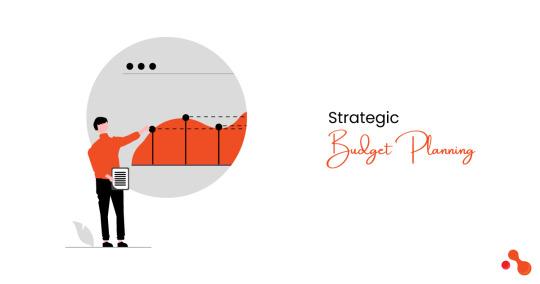
View On WordPress
0 notes
Text

Building a Successful Software Product Development Strategy: Key Considerations in 2024
Are you looking to create successful software products? Dive into the blog post to explore crucial considerations and strategies for developing an effective software product development strategy. Enhance customer satisfaction, gain a competitive advantage, optimize resources, and mitigate risks.
0 notes
Text

UK 1987
#UK1987#RAINBIRD#LEVEL 9 COMPUTING#MAGNETIC SCROLLS#REALTIME GAMES SOFTWARE#INTERGALACTIC DEVELOPMENT#ADVENTURE#STRATEGY#ACTION#AMIGA#ATARIst#IBM#APPLE#C64#SPECTRUM#AMSTRAD#MSX#ATARI400/800#MACINTOSH#CARRIER COMMAND#TIME AND MAGIK#JINXTER#UMS THE UNIVERSAL MILITARY SIMULATOR#UNRELEASED#DICK SPECIAL
10 notes
·
View notes
Text
#1 Website Development Company#IT & Digital Marketing Company#Top IT Companies Near me#Top Digital Marketing Agencies#Graphic Designing Company#Branding Experts#Video Editing#Online Marketing Solutions#Software Companies in Jaipur#Increase Website Traffic#Lead Generation Strategies#PPC Advertising
2 notes
·
View notes
Text
FIRST PRIORITY IS YOUR HAPPINESS.
Techjour helps C-suite Executives to turn today's challenges into tomorrow’s opportunities. CXOs are busy in building their businesses while We have our set of solutions to offer for them. Team closely work with Clients from to understand requirements to deliver expected results. Among complex set of technologies, we assist Clients to decide number of technologies based on nature of application, their business growth and to reduce cost.

Consult us to discuss your requirements.
#ceo#technology#startup#automation#trendingnow#clientsatisfaction#happyclients#software development#customer experience#entrepreneur#business#digital strategy#techjour
2 notes
·
View notes
Text

Are you falling behind in your e-commerce game? commercetools can be your savior.
Our commercetools development services can fulfill your e-commerce needs, including:
High customization: Customize your store as per your brand image
Best-of-breed features: Take the most out of the best tools to provide a smooth shopping experience
Less risk: We help you overcome common errors
Faster TTM: Get your store up and running quicker
Let’s connect and give your e-commerce store the experience you want
https://www.altdigital.tech/about-us/contact-us
#commercetools #commercetoolsdevelopment #commercetoolsservices #commercetoolsdevelopmentservices #ecommerce #ecommerceservices
#it service provider#software devops service#digital strategy consultant#devops service#web development#software#commerce tools#digital transformation consultant#digital customer experience services
2 notes
·
View notes
Text

Top Digital Marketing Company in Jaipur 2024 – Camlenio
In the bustling city of Jaipur, where tradition meets modernity, businesses are constantly vying for attention in a crowded marketplace. Amidst this competition, one name stands out in the digital marketing landscape: Camlenio. But what makes Camlenio the top digital marketing company in Jaipur in 2024? Let’s dive in and explore the secrets behind their success.
Why Digital Marketing is Crucial for Businesses Today
In today’s digital age, traditional marketing strategies are no longer sufficient. Businesses need to adopt digital marketing to reach their target audience effectively. Here are some reasons why digital marketing is crucial:
Wider Reach: Digital marketing allows businesses to reach a global audience.
Cost-Effective: Compared to traditional marketing, digital marketing is more affordable.
Measurable Results: Digital marketing provides measurable results, allowing businesses to track their ROI.
Targeted Marketing: Businesses can target specific demographics and tailor their marketing campaigns accordingly.
#softwarecompany#digitalmarketing#developemnt#software#web developing company#internet#seo services#seo#search engine optimization#marketing strategy
2 notes
·
View notes
Text
Search engine optimization
Alienspost India: digital marketing agency
SEO involves optimizing a website to improve its ranking on search engine results pages (SERPs), which can help increase your reach to potential customers and support your wider digital marketing efforts. Alienskpost is a freelancers agency that provides different marketing strategies like SEO, SMM, PPC and many such others ways to improve your business in online world. Now a days online marketing is dominating over offline marketing. Without SEO or PPC you will not be able to find your own website. Post your project on Alienspost and enjoy the business world with us.
#Alienspost India#freelancers#online marketing#marketng tips#digital marketing#content marketing#search engine optimization#business strategies#SEO#PC#software development#Alienskart Web#Aliensdigital
4 notes
·
View notes
Text
FINTECH MARKETING STRATEGIES TO TRY IN 2024
Solution about,
custom blockchain development company
fintech app development company
digital wallet app development company
Our Other Blogs, Highen Fintech Blogs
#blockchain#fintech#fintech app development#lending software development company#marketing#marketing strategy#marketing stratergies#fintech marketing#custom software development#custom software solutions#custom software implementation and integration#custom software company#custom software application#highen fintech#blog
3 notes
·
View notes
Text
Outsourcing vs in-house software development
Software development is transforming businesses, enhancing efficiency at every stage.These days businesses rely solely upon software to streamline operations, making robust development strategies essential. Two primary methods prevail: in-house and outsourcing.
Each offers unique advantages, and finding the right balance is crucial for effective deployment.
Let's explore in-house and outsourced software development to see which is best for your organization
Read more : https://wseinfratech.com/infographics/inhouse-vs-outsourcing-navigating-key-differences-in-software-development
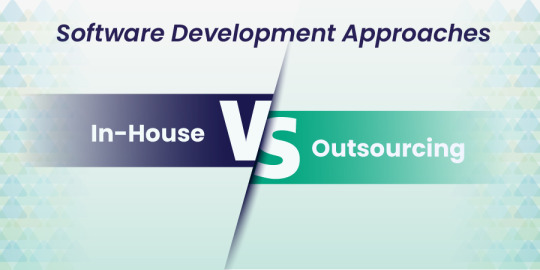
#Software Development Approaches#Software Development Service#Software Development Outsourcing#Software Development Strategy#Software Development
0 notes
Text
8 Tips To Implement Transparent Software Budgets
Introduction
Budgeting is a crucial process for any organization, as it helps to allocate resources, create software development strategy, plan for the future, and measure performance. This can be challenging, especially when it involves multiple stakeholders.
One way to improve your budgeting process is to implement transparent budgeting and in-depth cost analysis. How can you ensure that your budgeting process is transparent, accurate, and effective?
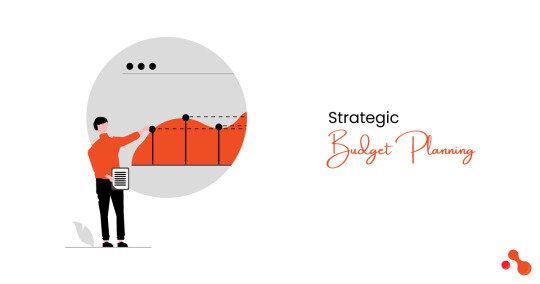
Implementing transparent budgeting and in-depth cost analysis is vital for any organization. The importance of transparent budgeting and in-depth cost analysis is something you cannot ignore.
This article will explore practical tips for adopting these practices effectively within the context of software development projects.
Breakdown of Software Development Costs
A transparent software budget means that you share your budget assumptions, methods, and results. Transparency is with all the relevant parties, including team members, managers, clients, and funders. In-depth cost analysis means that you break down your budget into detailed components. This is typically estimating the cost of labor, materials, overheads, and contingencies using realistic assumptions.
Estimating the cost of software development takes work. It often includes a scoping session as well. It includes establishing the project goals and the target audience. The type of software and how the users will interact with the software also influence the cost.

The choice of the software development team will affect the cost. An in-house team will cost more since there are many overheads. Outsourcing to freelancers can reduce the cost of development. Hiring remote developers from software development companies in India is beneficial in many ways.
It will lower your cost but at the same time ensure good quality and reliable team. Besides considering these factors for determining the price, it is vital to be aware of other factors. Mistakes, unforeseen issues, and scope creep can lead to an increase in the cost of software development.
Here is the breakdown of the cost to develop good software:
Software type
Complexity
Size
UI/UX Design
Team Size
Platform
Budget overruns issues
Interesting budget statistics:
70% of organizations choose to outsource software development.
17% of software projects fail to meet their goals.
Agile project techniques benefits are high.
Ability to handle change in priority - 70%
Increase in project visibility - 65%
Business and IT alignment - 65%
8 Tips For Transparent Budgeting and Cost Analysis
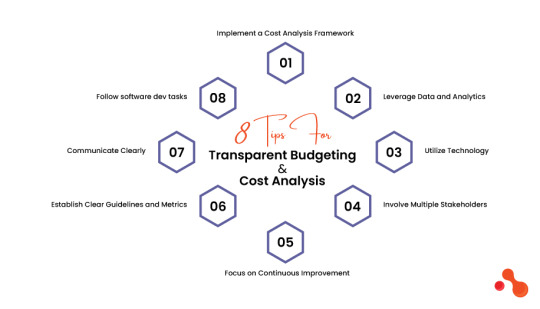
Implement a Cost Analysis Framework
An activity-based costing approach allocates costs to specific activities. This provides a more accurate picture of the consumption of resources. Conduct a cost-benefit analysis before undertaking new projects.
All major financial decisions should be made after in-depth analysis and by maintaining complete transparency.
Leverage Data and Analytics
Utilize data analytics software to delve into your cost data. These tools can help identify trends, anomalies, and opportunities for cost optimization. Periodic audits can uncover inefficiencies.
Focus on Continuous Improvement
Encourage a culture of continuous improvement. This will increase motivation to identify cost-saving opportunities and process enhancements. Regularly review cost structures and performance against benchmarks. Cost analysis is not a one-time activity; hence, adjust as per reports. This will ensure financial efficiency and effectiveness.
Involve Multiple Stakeholders:
Engage various departments and teams in the budgeting process. This collaborative approach ensures that diverse perspectives are considered. This will lead to a more comprehensive and realistic budget.
Communicate Clearly:
Regularly share financial information and budget updates with stakeholders. Clear communication helps demystify the budgeting process. This can be made possible through meetings, reports, and dashboards and encourages constructive feedback.
Utilize Technology:
Leverage technology to streamline the budgeting process. Modern budgeting software offers features like real-time data analysis, scenario planning, and collaborative tools.
It becomes easier to maintain transparency and accuracy. Spreadsheets, databases, and special-purpose applications can automate the calculations and validations. They increase your efficiency with dashboards, charts, graphs, and additional tools.
Establish Clear Guidelines and Metrics
Set clear rules for the budget creation, monitoring, and modifications. Such guidelines clearly emphasize the importance of accuracy, accountability, and ethical financial management.
Establish the key performance indicators (KPIs) to identify the financial and operational metrics. Use these to measure the success and align your strategic goals.
Follow software development methodology tasks:
Define your budget objectives and scope clearly. Simplify this task with an exercise for a clear purpose and scope.
Specify what your budget covers and what the expected outcomes are. Clarify what you are trying to achieve and the deliverable.
Define assumptions or constraints, and what are the timelines or milestones. Detect the key drivers and variables affecting your business.
Take advantage of historical data from previous projects or similar activities. Use market data from industry reports, benchmarks, or expert opinions.
Document and share your budget process and outcomes with your stakeholders.
Monitor and review your budget performance regularly and update it as needed. Use a consistent methodology for gathering requirements, analyzing, and developing.
Benefits Of Budget Analysis & Transparency
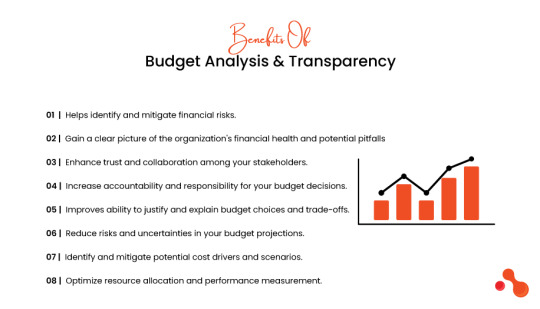
Transparency in budgeting processes ensures that everyone understands the usage and allocation of financial resources.
Divulging budget information to employees, investors, and all stakeholders fosters a sense of ownership and responsibility and improves organizational performance.
Businesses can make more informed decisions by gaining access to granular data as a result of the cost analysis.
Evaluate profitability and impact of decisions for better business strategies.
Helps identify and mitigate financial risks.
Gain a clear picture of the organization's financial health and potential pitfalls.
Take proactive steps to avoid or minimize adverse impacts of cost overrun issues.
Enhance trust and collaboration among your stakeholders.
Increase accountability and responsibility for your budget decisions.
Improves ability to justify and explain budget choices and trade-offs.
Reduce risks and uncertainties in your budget projections.
Identify and mitigate potential cost drivers and scenarios.
Optimize resource allocation and performance measurement.
Track and compare your actual costs against your budget estimates and adjust accordingly.
Primary Factors Affecting Software Development Cost
There is more to software development than you can imagine. Several factors affect the overall cost. Several dynamic issues affect the price as well. The software complexity, technology, and market conditions are some of them.
Cost overrun can have a significant impact on your project. Attempting to deliver software on time and within the budget can potentially make or break your business.
Delays in the project development are a major factor affecting the budget. Changes to the scope at a later stage and having to deal with changes will cause delays.
Affordable Software Development Solutions at Acquaint Softtech
If you are looking for affordable software solutions for your business, consider outsourcing to professionals. Outsourcing is a smart way to save money, time, and resources while getting high-quality results. Acquaint Softtech is one such professional firm offering several software development outsourcing services.
When you hire remote developers from Acquaint Softtech, you gain access to a pool of talented and experienced developers. This team can handle any project, from web development to mobile apps, from eCommerce to cloud computing.
We have the expertise to reduce your operational costs by avoiding hiring, training, and managing an in-house team. You only pay for the work done and not for the overheads. and also focus on your core business activities and leave the technical aspects to us.
You can scale your project according to your needs and budget with ease. There is no need to worry about security and reliability either. We use the latest tools and technologies to deliver optimal performance.
We can understand your goals and objectives. This makes it possible for us to align our development process with your business objective.
If you are interested in outsourcing to professionals for affordable software solutions, contact us today and let us help you achieve your goals.
Conclusions
By incorporating good practices into your budgeting and cost analysis processes, you can enhance transparency. It will also improve decision-making and identify opportunities for cost optimization within your organization. Transparent budgeting and in-depth cost analysis require a strategic approach.
Hiring professionals like Acquaint Softtech will help streamline your software development requirements.
0 notes
Text
The Power of Content Marketing : Strategies For Success

Are you ready to harness the immense power of content marketing and take your business to new heights? Look no further! In this blog post, we will unveil the secrets behind successful content marketing strategies that are guaranteed to captivate your audience and skyrocket your brand’s visibility.
Get ready to unlock a world where compelling storytelling meets strategic promotion, as we explore how content marketing can transform your business into an unstoppable force in today’s digital age. So buckle up, because we’re about to embark on an exhilarating journey towards unparalleled success!
INTRODUCTION
Content marketing has become an essential aspect of modern marketing strategies. From small businesses to large corporations, companies are utilizing content to connect with their target audience and drive business success. In today’s digital age, where consumers are bombarded with advertisements and promotions, content marketing offers a unique approach to engage with customers and build long-lasting relationships.
What is Content Marketing?
At its core, content marketing is the creation and sharing of valuable, relevant, and consistent content to attract and retain a clearly defined audience. It involves using various forms of media such as blogs, videos, social media posts, infographics, podcasts, etc., to provide informative or entertaining content that resonates with your target audience. The goal of content marketing is not to explicitly promote a product or service but rather establish credibility and trust with potential customers.
Why is Content Marketing Important?
The power of content marketing lies in its ability to create meaningful connections between brands and consumers. By providing valuable information or entertainment through your content, you can establish yourself as an industry expert and build trust among your target audience. This trust translates into brand loyalty and increased sales in the long run.
Moreover, traditional advertising methods have become less effective due to the rise of ad blockers and consumer skepticism towards traditional ads. On the other hand, quality content that is genuinely helpful or entertaining can break through this noise and capture the attention of potential customers.
– EXPLANATION OF WHAT CONTENT MARKETING IS
Content marketing is a powerful tool for businesses to attract and engage with their target audience. It involves creating valuable and relevant content that addresses the needs and interests of your target market. This content can take various forms such as blog posts, videos, infographics, social media posts, podcasts, e-books, webinars, and more.
At its core, content marketing is about building trust and credibility with your audience by providing them with valuable information rather than constantly promoting your products or services. It aims to educate and inform rather than sell directly. By consistently delivering high-quality content, businesses can establish themselves as thought leaders in their industry and earn the trust of their potential customers.
One of the key elements of successful content marketing is understanding your target audience. You need to have a clear understanding of who they are, what they care about, where they spend their time online, what kind of content resonates with them, and what motivates them to take action.
Once you have a solid understanding of your target audience, you can create a comprehensive content strategy that aligns with their interests and needs while also supporting your business goals. Your strategy should include defining the types of content you will create (e.g., blog posts vs. videos), the platforms you will use (e.g., website vs. social media), how often you will publish new content, and how you will measure success.
IMPORTANCE AND BENEFITS OF CONTENT MARKETING FOR BUSINESSES
Content marketing has become an essential tool for businesses looking to establish a strong online presence and drive conversions. It involves creating and sharing valuable, relevant, and consistent content to attract and retain a clearly defined target audience. In today’s digital landscape, where consumers are bombarded with advertisements and promotions, content marketing offers a more subtle approach to building brand awareness and credibility.
The importance of content marketing for businesses cannot be overstated. Here are some key benefits that make it an indispensable part of any marketing strategy:
1. Establishes brand authority and credibility: By consistently publishing high-quality content that addresses the pain points of your target audience, you can position yourself as an expert in your industry. This helps build trust with potential customers, making them more likely to choose your products or services over competitors.
2. Boosts search engine rankings: Search engines like Google value fresh, relevant content when ranking websites. By regularly updating your website with valuable blog posts, videos, infographics, etc., you can improve your search engine optimization (SEO) efforts and increase your visibility online.
3. Drives traffic to your website: Quality content attracts visitors to your website who would not have found you otherwise. When people find helpful information on your site that meets their needs, they are more likely to explore other pages on your site and potentially convert into customers.
IDENTIFYING YOUR TARGET AUDIENCE
Before diving into the world of content marketing, it is crucial to first identify your target audience. The success of your content marketing strategy heavily relies on understanding and catering to the needs and preferences of your target audience. By identifying your target audience, you can create content that resonates with them, captures their attention, and ultimately drives conversions.
In this section, we will discuss some key steps to help you identify your target audience:
1. Define Your Product or Service: The first step in identifying your target audience is to clearly define what product or service you are offering. This will help you understand the type of people who would be interested in what you have to offer.
2. Conduct Market Research: Once you have defined your product or service, it’s time to conduct market research. This involves gathering data about your potential customers such as their demographics (age, gender, income), interests, behavior patterns, and purchase habits.
3. Analyze Your Current Customers: Another helpful way to identify your target audience is by analyzing your current customer base. Look at who is already buying from you and try to find common characteristics among them.
4. Create Buyer Personas: A buyer persona is a semi-fictional representation of your ideal customer based on market research and real data about existing customers. It helps put a face and personality behind the demographics and behaviors of your target audience.
– WHY KNOWING YOUR AUDIENCE IS CRUCIAL FOR SUCCESSFUL CONTENT MARKETING
Knowing your audience is one of the key elements for successful content marketing. In today’s fast-paced digital world, it is not enough to simply create and distribute content without understanding who your target audience is. With so much noise and clutter on the internet, it is crucial for businesses to tailor their content specifically to their target market in order to stand out and effectively communicate their message.
So why exactly is knowing your audience so important for successful content marketing? Let’s delve into some of the reasons:
1. Targeted messaging: By understanding your audience, you can create more targeted and relevant messaging that resonates with them. This means taking into account factors such as demographics, interests, pain points, and values of your target market. By crafting messages that are specific to their needs and preferences, you are more likely to capture their attention and engage them with your content.
2. Higher conversion rates: When your content speaks directly to your audience’s needs or problems, they are more likely to take action on it. This could mean making a purchase, signing up for a service, or subscribing to your newsletter. By addressing their pain points and offering solutions through your content, you establish trust with your audience which can lead to higher conversion rates.
METHODS FOR IDENTIFYING AND UNDERSTANDING YOUR TARGET AUDIENCE
When it comes to content marketing, one of the key factors for success is understanding and effectively targeting your audience. Without a clear understanding of your target audience, your content may not resonate with them and fail to drive engagement or conversions. This is why it is crucial to use methods that can help you identify and understand your target audience.
1. Conduct thorough market research: The first step in identifying and understanding your target audience is conducting thorough market research. This involves gathering data on demographics, interests, behaviors, preferences and pain points of potential customers. Market research can be done through surveys, focus groups, interviews, or by analyzing data from online tools like Google Analytics.
2. Utilize social media analytics: Social media platforms are a goldmine for valuable insights about your target audience. By using analytics tools provided by various social media platforms such as Facebook Insights or Twitter Analytics, you can gain valuable information about your followers such as their age, gender, location, interests and more.
3. Monitor website traffic: Your website visitors can also provide valuable insights into your target audience. Tools like Google Analytics can track the behavior of visitors on your website including pages they visit most frequently, time spent on each page and their journey before leaving the site. This information can help you understand what type of content resonates with them.
SETTING GOALS AND OBJECTIVES
In order to have a successful content marketing strategy, it is crucial to set clear and specific goals and objectives. These will serve as the foundation for your entire content marketing plan and guide you towards achieving success.
1. Identify Your Overall Marketing Objectives: The first step in setting goals for your content marketing is to identify your overall marketing objectives. This could include increasing brand awareness, generating leads, driving website traffic, or boosting sales. Having a clear understanding of what you want to achieve through your content will help you create more targeted and effective campaigns.
2. Make Your Goals SMART: Once you have identified your overall objectives, it is important to make them SMART – Specific, Measurable, Achievable, Realistic, and Time-bound. This will give you a clear roadmap for what needs to be done and when it should be accomplished by.
3. Define Your Target Audience: In order for your content marketing efforts to be effective, they need to resonate with your target audience. Take the time to define who your ideal customers are – their age, interests, pain points, etc. This will help you create content that speaks directly to them and encourages engagement.
– ESTABLISHING CLEAR GOALS AND OBJECTIVES FOR YOUR CONTENT MARKETING STRATEGY
When it comes to content marketing, having a clear set of goals and objectives is crucial for creating an effective strategy. Without a solid understanding of what you want to achieve with your content, it can be difficult to measure success and make necessary adjustments. In this section, we will discuss the importance of establishing clear goals and objectives for your content marketing strategy and how to do so effectively.
1. Define Your Target Audience: The first step in setting up any successful marketing strategy is identifying your target audience. This includes understanding their demographics, interests, pain points, and behaviors. By clearly defining your target audience, you can create content that resonates with them and addresses their specific needs.
2. Identify Your Objectives: Once you have a clear understanding of who you are targeting with your content, it’s time to establish the objectives you want to achieve through your content marketing efforts. These objectives could include increasing brand awareness, driving website traffic or leads, improving customer engagement and retention, or showcasing thought leadership within your industry.
3. Set SMART Goals: A great way to ensure that your goals are realistic and achievable is by following the SMART criteria – Specific, Measurable, Attainable, Relevant and Time-bound. This means setting specific targets such as increasing website traffic by 20% in the next six months or generating 50 new leads per month through content.
– HOW TO MEASURE SUCCESS AND TRACK PROGRESS TOWARDS YOUR GOALS
Measuring success and tracking progress towards your goals is a crucial aspect of any content marketing strategy. Without proper tracking, it can be difficult to determine if your efforts are effective or if you need to make adjustments. In this section, we will discuss some key steps for measuring success and tracking progress towards your content marketing goals.
1. Determine Your Key Performance Indicators (KPIs)
The first step in measuring success is to identify the key metrics that will help you track progress towards your goals. These metrics, also known as Key Performance Indicators (KPIs), should align with your overall business objectives and provide insight into the performance of your content marketing efforts.
Some common KPIs for content marketing include website traffic, conversion rates, email subscribers, social media engagement, and lead generation. Depending on your specific goals, you may have different KPIs that are more relevant to your business.
2. Set Realistic Goals
Before you can measure success, you need to establish clear and realistic goals for your content marketing strategy. These goals should be specific, measurable, attainable, relevant and time-bound (SMART).
For example, if one of your main objectives is to increase website traffic through content marketing by 20% in the next six months, this goal meets all the criteria of being SMART. Having well-defined goals will not only help you focus on what matters but also make it easier to track progress towards achieving them.
CREATING HIGH-QUALITY CONTENT
Creating high-quality content is essential for any successful content marketing strategy. In a sea of information and competition, it is crucial to produce content that stands out and engages your target audience. High-quality content not only helps to attract potential customers but also builds trust and credibility with your existing audience.
Here are some key factors to keep in mind when creating high-quality content:
1. Know Your Audience Before you start creating any type of content, it is important to have a deep understanding of your target audience. This includes knowing their demographics, interests, pain points, and preferred communication channels. By understanding your audience’s needs and preferences, you can tailor your content to effectively resonate with them.
2. Provide Valuable Information One of the main reasons people consume online content is to gain knowledge or solve a problem. Therefore, it is vital to provide valuable information in your content that addresses the needs or interests of your audience. This could include industry insights, how-to guides, informative articles or case studies.
3. Use Engaging Formats Content comes in various formats such as text, images, videos, infographics etc., and using different formats can make your content more engaging and appealing to different types of audiences. For instance, visual learners may prefer infographics while others may prefer video tutorials or podcasts.
– TIPS FOR SUCCESSFUL CONTENT MARKETING:
1. Know your target audience: Before creating any content, it is important to understand who your target audience is. Conduct market research and create buyer personas to get a better understanding of their needs, preferences, and behaviors. This will help you tailor your content to meet their specific needs.
2. Create high-quality and relevant content: Quality is key when it comes to content marketing. Your content should be informative, engaging, and valuable to your target audience. It should also be relevant to their interests and pain points, in order to capture their attention and keep them engaged.
3. Use different types of content: To appeal to a wider audience and keep them interested, use a variety of content formats such as blog posts, videos, infographics, podcasts, and social media posts. This will not only make your content more visually appealing but also cater to different learning styles.
4. Consistency is key: In order for your content marketing efforts to be successful, consistency is crucial. Develop a consistent posting schedule so that your audience knows when they can expect new content from you.
5. Incorporate SEO best practices: Utilize search engine optimization (SEO) techniques in your blog posts or website pages by including relevant keywords in your headlines, subheadings, and throughout the body of the text. This will make it easier for search engines like Google to find and rank your content.
CONCLUSION
In today’s digital age, content marketing has become a powerful tool for businesses looking to engage with their target audience and drive conversions. By implementing the strategies discussed in this article, you can effectively create and distribute valuable content that resonates with your audience and drives results.
Remember to stay consistent, track your progress, and adapt as necessary to see continued success in your content marketing efforts. Don’t underestimate the power of quality content – it truly is king in today’s competitive online landscape.
#The Power of Content Marketing : Strategies For Success#software development#web design#web development#multimedia / flash animation services#web design agency in toronto canada#web design company in mississauga#web devlopment#app development#graphic design#digital marketing agency canada#digital marketing#design
4 notes
·
View notes
Text
https://www.fastcompany.com/90907757/train-brain-into-flow
While the article (from June) is from the perspective of writing prose, it seems to me the strategy described ("parking on a downhill slope") might also work for writing software.
When coding, I strive to focus on each task for as long as it takes to complete. It seems natural to end each session with the project in a "good" state (building successfully/cleanly, all changes committed/tested/pushed). I expect it will be difficult for me to break that habit.
2 notes
·
View notes
Text
Product Engineering Services for Modern Software Solutions
Modern software solutions take a comprehensive approach to designing, developing, testing, and maintaining software products throughout their lifecycle. This covers everything from initial product ideation and strategy to post-launch support and ongoing improvements. A product engineering services company plays a vital role in this process, assisting businesses in developing robust, scalable, and user-friendly software that meets market demands and user needs. Innovation is now necessary and no longer optional.
That’s where product engineering services play a transformative role. By bridging the gap between idea and execution, these services enable organizations to launch, scale, and maintain robust software solutions in a competitive landscape. From startups aiming to disrupt markets to enterprises modernizing legacy systems, the demand for intelligent, scalable, and agile software continues to grow rapidly. Fortunately, with the right approach to product engineering, even complex ideas can be transformed into high-performing digital products.
Importance of Product Engineering for Modern Software Solutions
To begin with, product engineering services cover the entire lifecycle of a software product, from ideas and design to development, testing, deployment, and maintenance. This comprehensive approach ensures that products are not only functional and user-friendly but also scalable and ready for the future.
Moreover, these services are typically offered by specialized teams with diverse skills, allowing for agile practices, rapid prototyping, and quicker time-to-market. Whether it’s mobile apps, SaaS platforms, enterprise tools, or IoT systems, product engineering plays a vital role in building the digital foundation of modern businesses………….
#product engineering services#software product development#digital product engineering#agile product engineering#scalable software solutions#software lifecycle management#product innovation strategy#cloud-native development#DevOps integration#modern software architecture
0 notes
Text
Balancing Agility and Control: How to Optimize Contingent Workforce Staffing with Smart Vendor and Direct Hire Strategies

In today’s competitive talent landscape, companies are rethinking the way they hire. The rise of contingent workforce staffing—temporary workers, freelancers, consultants, and independent contractors—has introduced a more flexible approach to fulfilling talent needs. Whether you’re scaling fast, managing seasonal spikes, or accessing specialized skills, contingent workers offer agility without the long-term commitment.
But flexibility shouldn’t come at the cost of control.
To manage a blended workforce effectively, organizations are turning to robust vendor management solutions and direct hire strategies that bring structure, visibility, and speed to the hiring process.
Why Contingent Workforce Staffing Is on the Rise
Businesses increasingly rely on contingent talent for:
Cost-effective scalability
Faster hiring for urgent projects
Specialized skills not available in-house
Reduced overhead and employment risk
But managing this flexible talent layer without the right systems can lead to inefficiencies, compliance challenges, and missed opportunities.
The Role of a Vendor Management Solution
A vendor management solution (VMS) is designed to streamline how organizations engage, onboard, and manage staffing vendors and contingent workers. It acts as a centralized platform for tracking vendor performance, labor costs, worker compliance, and more.
Benefits of using a vendor management solution:
Centralized vendor tracking and communication
Automated onboarding and offboarding workflows
Real-time reporting on cost, performance, and headcount
Compliance management to reduce legal risks
Vendor scorecards and SLA tracking
With the right VMS, companies can gain full visibility into their contingent workforce operations and drive better outcomes with fewer administrative headaches.
Integrating Direct Hire into Your Talent Strategy
While contingent staffing is critical for short-term needs, direct hire remains essential for building long-term organizational strength. By hiring employees directly—without third-party agency involvement—companies save on fees and strengthen employer branding.
Benefits of a direct hire model include:
Lower cost-per-hire compared to agency models
Stronger employee engagement and cultural fit
Greater control over the candidate experience
Scalable pipelines for future workforce planning
A strong direct hire strategy complements contingent staffing by ensuring you’re building a permanent talent foundation while maintaining the flexibility of on-demand labor.
The Ideal Talent Model: Blending Contingent Staffing, Vendor Management, and Direct Hiring
The most agile and future-ready companies are those that successfully blend contingent staffing with direct hiring—using a vendor management solution to tie it all together.
Here’s how it works:
Use contingent staffing for project-based roles and seasonal demand
Build internal talent pools for direct hires through employer branding and referrals
Use a VMS to monitor vendor performance, compliance, and total workforce spend
Optimize decisions with data insights from your staffing ecosystem
Platforms like hireHQ make it possible to manage all these channels in one place—giving HR and procurement teams the tools they need to scale fast without losing control.
Final Thoughts
The future of hiring isn’t one-size-fits-all—it’s hybrid, strategic, and tech-enabled. By leveraging contingent workforce staffing, implementing a smart vendor management solution, and building a proactive direct hire pipeline, businesses can gain the flexibility to adapt—and the foundation to grow.
Work smarter. Hire faster. Build better.
#contingentworkforce#vendor management software#vendor management solutions#vendor management tools#talentacquisition#directsourcing#vendormanagement#procurement#workforce development#direct sourcing strategy#contingent workforce management software#vms provider#vms management#vms platform#contingentworkforcemanagement#contingentstaffing
0 notes